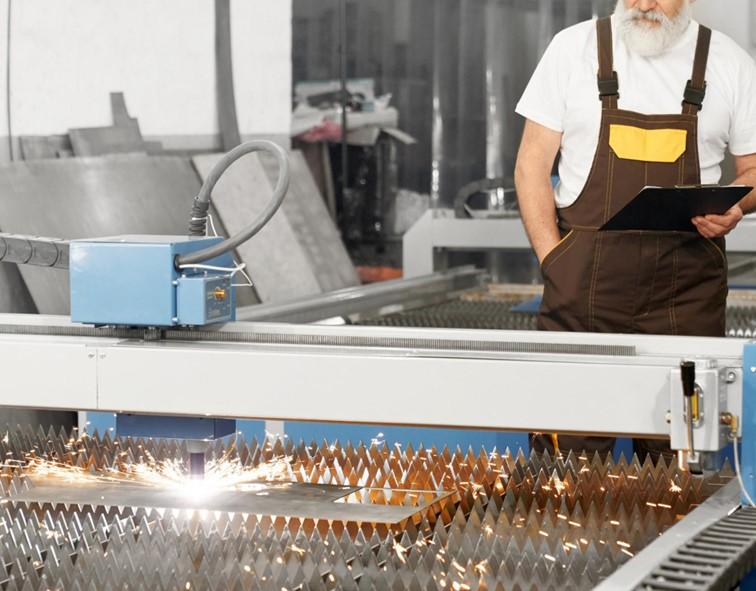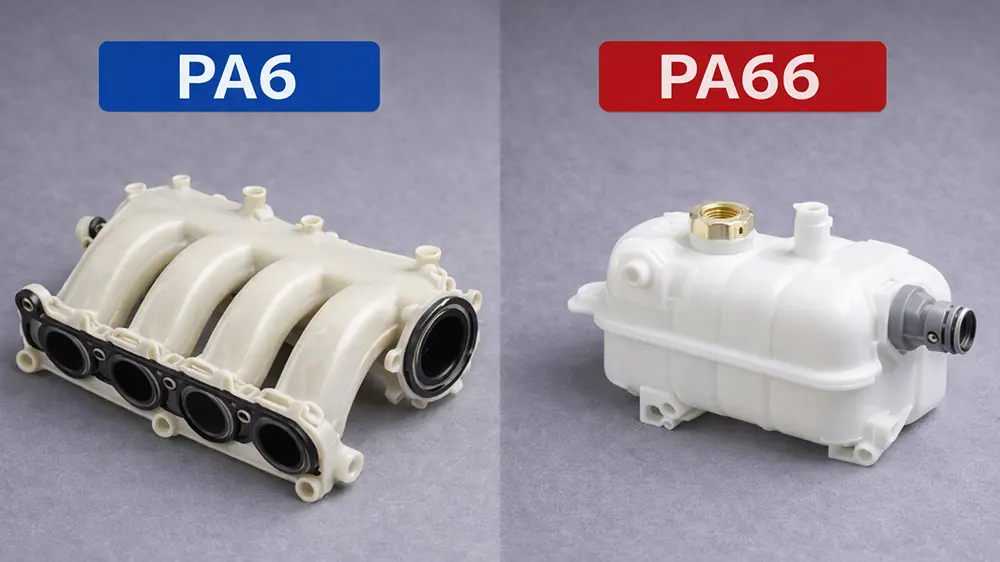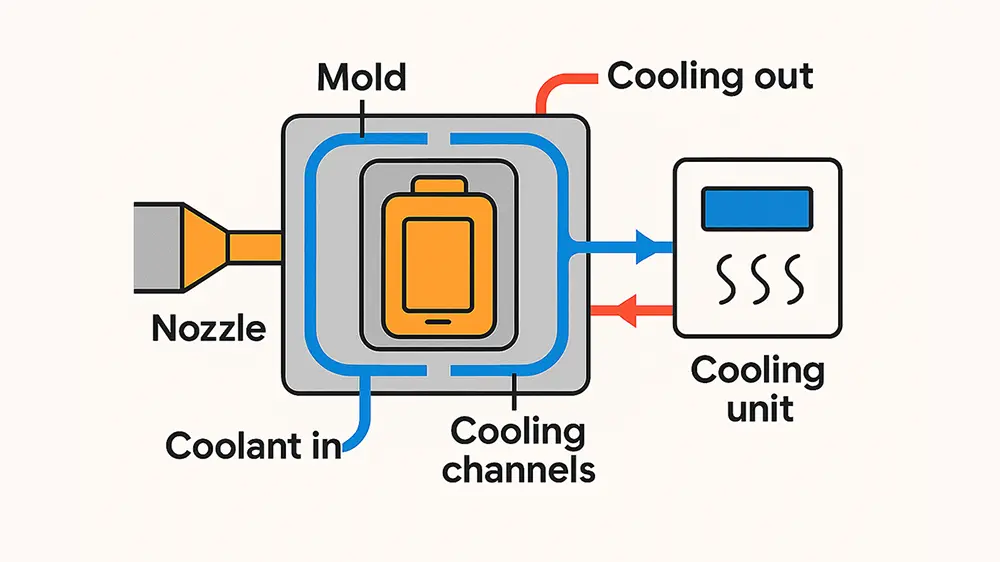Sheet metal fabricating has become a state-of-the-art manufacturing method thanks to its capacity to deliver extraordinary accuracy, speed, and adaptability. This process creates elaborate designs and highly strong automotive, aerospace, and consumer goods components.
Laser cutting and bending techniques are central to the latest developments. These operations allow fabricators to cut, melt, and shape sheet metals, especially stainless steel, super-accurately.
Laser cutters employ high-precision technology, which enables them to make the necessary cuts and, in this case, penetrate the material while the latter remains intact. Meanwhile, pertinent bending machines are responsible for driving the curvatures of different designs to the point of complexity when the lines must be straight.
One of the new uses of sheet metal laser cutting and bending in this article is the unprecedented advancement of metalworking in these fabricating. The latest cutting techniques and the accompanying use of cutting machines will help readers learn more about the subject.

Laser Cutting in Sheet Metal Fabricating
Laser cutting is a pivotal technique in sheet metal fabricating. It demonstrates the extreme precision and flexibility needed in modern manufacturing. Teachers use this technology, which employs directed laser beams that are usually coupled with CNC (Computer Numerical Control) systems.
It is excellent to get stainless steel and aluminum sheet metal cut precisely. Traditional methods of designing clean, elaborate shapes with a laser cutting machine are impossible or impractical.
It is most useful for complex metal parts where precision and edge quality are important whether it is a single prototype or a mass-production run, laser cutting guarantees efficiency and precision in modern metalworking.
What is Laser Cutting?
Laser cutting is a mechanism that utilizes powerful laser beams to cut sheet metal with high precision and productivity. The procedure starts with a laser cutting machine producing a focused beam of light that generates heating, melting, or vaporizing the material in a fixed path.
CNC technology gives the exact route for the laser beam to hover over to create complex geometries and designs with minimal material wastage. The system allows for different parameters, such as radius, laser power, and cutting speed,
Advantages of Laser Cutting
- High accuracy and repeatability: Laser cutting technology provides accuracy and homogeneity of the cuts, which is, again, extremely important for highly precise parts.
- Smooth, high-quality edges: The compact laser beam delivers clean edges that do not require further processing in many cases.
- Time-saving and efficient: The laser cutting process saves much time in production thanks to its high cutting speeds and automation.
- Cost-effective for complex designs: Laser cutting has resulted in minimal material wastage and reduced costs for simple and intricate parts.
- Versatile for various materials and thicknesses: Laser technology, with its easily controllable power capability, can cut a wide range of metals, including thin and thick sheets.
- Flexibility in radius and complex shapes: This method can be used for the parts of various shapes and complex designs.
- Reduced thermal distortion: This method’s highly concentrated heat application causes minimal distortion, allowing the metal part to maintain strength.
Applications and Flexibility
Laser cutting is widely used across vigor industries because it is flexible enough to produce very particular and creative forms, from prototype one-offs to full-scale production runs. For instance, buyers can pick the material they choose at the smallest required detail or prefer the one with acute turns.
Laser cutting has more line grains and a brighter finish than plasma or waterjet cutting. At the same time, plasma cutting is capable of handling thicker materials. However, it cannot achieve the precision level of laser cutting. Waterjet cutting can make very accurate cuts, but the process is slower than laser cutting, making it less efficient for thin metals.
- More exactness: Laser cutting excels in detail, which the other plasma and waterjet cutting methods cannot replicate.
- Cutting speed is increased when it comes to thin metals: Lasers exhibit competencies of higher cutting speed when applied, especially to thin sheet metal parts.
- More kinds of materials can be used: They can use this with many materials of varying thicknesses, and they can also make some clear plastics stick down on a metal surface, just to name a few.
- Less need for finishing: The laser quality is such that you’ll quickly find fewer finishing needs.
Bending in Sheet Metal Fabricating
It is one of the major procedures that must be automated in the sheet metal industry. It converts flat materials into 3D volumes without cutting or changing the thickness of the sheet. Thus, it shapes materials like stainless steel, carbon steel, and aluminum.
Bending allows manufacturers to produce sound and trustworthy products in various industries. It applies the sheet metal carefully under a given set of points, thus bending at specific angles and curves, in addition to other operations like laser cutting and punching.
The cutting processes create the patterns for the final shape of the material. Bending acts as the stewing process, refining major areas like automotive, construction, and aerospace.
The Role of Bending
Bending manifests itself significantly in the sheet metal fabricating industry. The use of flexible metal sheets that are reshaped by bending without losing any material goes hand in hand with laser cutting and punching, which include removing material from various pieces to make exquisite parts.
Using a laser, the base shape is formed by cutting through the material while bending encircles it, bringing the piece to its final functional form. For example, a high-power laser beam might precisely carve a carbon steel plate by cutting off a special form.
On the other hand, bending is applied to create an enterprise through the necessary angles and folds, thus, a finished product that meets the structural and aesthetic demands. Adding these two approaches of high framework adaptability greatly facilitates the production of complicated metal handiwork in numerous industries.
Advantages of Bending for Shape Formation
- Versatile Shape Creation: Bending makes it possible to create many shapes from sheet metal, such as curved, right-angled, and complicated geometries, which are used in everything from furniture to machine parts.
- Efficiency Across Industries: Cutting and bending sheet metals contribute to the efficient manufacturing of cars, houses, and electrical appliances, where custom shapes and strength are of the utmost importance.
- Reduced Waste: Shaping by bending keeps the material integrity and thickness unchanged. Thus, less waste is generated than through other methods. Consequently, it is preferred in high-precision, cost-efficient production.
- Structural Integrity: The process retains the metal’s strength by avoiding cuts or welds that can weaken a part’s structure.
- Design Flexibility: On the other hand, bending allows you to be creative and create intricate shapes that are impossible when using only cutting techniques.
- Cost-Effective: One of the main reasons to consider is that the assembly process will be cheaper because the operation requires only a limited number of fasteners.
- Environmentally Friendly: The manufacturing procedure involves reduced material removal, which emits fewer greenhouse gases and consumes less energy.
Common Bending Techniques
Bending methods differ in material, required angle, and desired finish. The following are a few of the frequently used techniques:
- Air Bending Steel: An adaptable style with various angles controlled by changing the punch and die, which is more appropriate for metal pieces of different thicknesses.
- Bottoming: A tight die allows for a punch with a very close set die. This helps to create a fixed angle, making production more accurate and repeatable, particularly with thin metals.
- Coining: This is a high-energy method in which the punch goes forcefully into the piece, producing direct and exact bends. Though it uses more power, coining is ideal when fine precision is crucial.
- Wipe Bending: A process in which a ramp and a punch are used for forming objects, ideal for making the contractors, and smaller bends, where precise specifications are satisfied.
- Roll Bending: It defines a pathway for the rollers to bend the plate curvedly. More accurately, it is used for making cylinders and has many applications in piping and tubing.
Complementary Techniques in Sheet Metal Fabricating
Metalwork’s contemporary application of technology covers a wide range of procedures that perfect accuracy, economy, and multifunctionality. Beyond laser cutting and bending, amalgamating multiple flexible and adaptable processes to different demands and materials considerably extends metalworking capabilities.
On the one hand, each of these techniques has some particular advantages, making them essential and useful in various non-traditional uses. Understanding these processes allows manufacturers to derive maximum benefits and obtain specific construction goals. Below, you break down complementary methods crucial in sheet metal fabricating.
1. Punching
Punching is a technique known for being cost-efficient and convenient for producing many workpieces. It is highly recommended for medium and large-volume productions. Punching rapidly cuts metal and defaces it using different methods throughout the production line.
An example could be automotive and appliance productions. In punching, the punch press engages its tools rapidly through the sheet metal’s target area, boosting production and preventing metals from drifting.
On the other hand, producing mild steel pieces with perfect shaping is a cost-effective solution. Besides, the punching technique extends manufacturing capabilities by adding simplicity and decreasing human labor in high-volume productions.
2. Waterjet Cutting
Waterjet cutting uses high-pressure water to cut through materials, making it a choice for thick and mixed applications in addition to laser cutting. Unlike a CO2 laser or any other laser cutter, which accidentally heat-cuts the material, waterjet cutting is a truly automatic method that leaves the materials intact due to the limited energy of the knife edge.
This technique is energy-efficient and, therefore, suitable for materials such as plastics, papers, and textiles that a laser beam will not stress. On the other hand, waterjet machining can cut composite materials with several layers of varying geometry and great thicknesses.
3. Plasma Cutting
Plasma cutting is a method that uses electrical gas to conduct thermal cuts, mainly in metals, with the base metal obtained by melting. Despite the paper-thin dimension of laser steel cuts, plasma cutting gives a quick solution for even stronger materials like mild steel and aluminum.
Its ability to handle vast material thickness concludes its relevance in industries requiring strong, durable, and high-production-rate components. Laser cutting is viewed as a more focused and precise operation than plasma cutting. Which is extremely high removal rate-oriented and highly economical.
4. Press Hardening
Press hardening is a hot-forming technique that dramatically improves the strength and durability of sheet metal components. Because the material is initially heated, it is molded at the lowest point of the curve and violently cooled afterward.
It produces high-strength components that are light enough for vehicle and heavy-duty factory equipment applications. Press hardening helps achieve strength and endurance that permit heavy-duty goods to bear extreme forces.
Augment the other procedures of cutting and bending because of their impact on highly solid applications. This method ensures that parts fulfill the most challenging performance demands while maintaining their structural integrity for a long time.
Welding and Assembly in Sheet Metal Fabricating
In sheet metal fabricating, welding and assembly are significant in producing durable, consistently reliable end products. Welding, on the other hand, is the technique that joins various metal pieces into a single unit, ensuring the conduct of strong and long-lasting structures.
In most cases, sheet metal parts undergo welding as a finishing and assembly method after being cut out, bent, and shaped. Methods like laser welding and other high-precision ones help increase the efficiency and strength of many industries.
The process mainly concerns components that need structural integrity, such as those used in automotive and aerospace manufacturing. This article will show how the development of advanced welding methods and the assembly procedure in modern metalworking will improve metal fabrication quality.
1. Punching: Cost-Effectiveness and High Production Rate
Punching is a quick, cheap, and perfect fabricating method for medium and high volumes of sheet metal. Dies are used for cutting machines, and punching produces holes and shapes quickly and accurately with metal.
Punching, as opposed to laser cutting and waterjet cutting, for example, is very efficient for repetitive tasks and offers high throughput for complex patterns.
This technique is best for articles with many perforations or special shapes, making it a must in industries with high production requirements. Punching preserves the material’s integrity because it is not a high-heat process. Which is, of course, the most important thing when sensitive metals are being processed.
2. Waterjet Cutting: Pressurized Water for Precision Cuts
Waterjet cutting uses a high-pressure stream of water, either alone or in combination with abrasive materials, to slice through sheet metal. Nevertheless, the waterjet cutting process does not involve heating, so it can be used for metals that could warp or melt when exposed to high heat, like laser cutting.
This cold-cutting method can cut through multiple types of materials of different thicknesses, such as rubber, soft metals, and hard metals. Nevertheless, laser cutters are excellent at both speed and detail in thinner metals, while waterjets are suitable for thicker or heat-sensitive metals, giving manufacturers a broader cutting approach.
3. Plasma Cutting: Ionized Gas for Thermal Cutting
Plasma cutting is a tool that uses a jet of ionized gas to create heat and cut through the thickest parts of sheet metal. This technique is best for thicker metals that require high heat to be cut quickly.
Unlike laser cutting, which is typically the best option for thin, intricate designs, plasma cutting is faster and more effective for cutting heavy-duty metal sheets. In many industries where the need for speed in cutting through dense materials is of the utmost importance, such as the construction and shipbuilding industries, plasma cutting has become a popular tool.
4. Press Hardening: Hot Forming for High-Strength Components
Press hardening or hot forming is a method of heating metal to high temperatures and molding it into strong, long-lasting components. This procedure improves the strength of the material, making it more impact-resistant.
This makes it a highly suitable method for components in the automotive and heavy-duty industries, which are exposed to optimum stress levels. Press hardening produces metals with a hardened outer shell by combining heat and pressure. It is most often utilized in automobile frameworks, beams for sake purposes, and other essential parts that must be long-lasting and resilient.
5. Laser Welding: High-Precision Assembly with a Laser Beam
Laser welding is a technique in which metal parts are joined with a focused laser beam. This method is extremely reliable since the heat from the laser is concentrated in the area being welded, resulting in precise and clean welds with minimal distortion. Laser welding has become a valuable tool in industries that require high accuracy, such as automotive and aerospace.
Laser welding allows manufacturers to produce high-quality, seamless joins in metallic components. It works in tandem with laser cutting by guaranteeing that the metal sheets that have been masterfully cut will fit together flawlessly during the assembly, thus forming a durable, integrated structure.
6. Other Welding Methods: Versatile Assembly in Metal Fabrication
Other famous welding techniques, including TIG, MIG, and spot welding, are key elements in metal fabrication. These methods allow us to weld different shapes and sizes of metals and choose the best welding process according to the type of base metal and the application.
Welding is a technique used during the finishing and assembly process. It allows the different parts of sheet metal to be joined together to form a unified, functional product. Either laser or conventional methods are employed to join the metal elements, thus giving the product a physical quality of being together and good strength and durability.
What are The Benefits of Laser Cutting and Bending in Modern Manufacturing?
Laser cutting and bending have taken modern manufacturing to a new level with high precision, efficiency, and flexibility in production. Manufacturers produce high-quality and consistent products.
Especially when dealing with complex or custom designs, the high-intensity laser beam can cut through materials such as mild steel and thin sheet metal. This method has been the biggest advancement for the automotive and air industries, which are looking for speed and accuracy.
Key Benefits:
- Enhanced Precision and Consistency: A laser cutter is usually attached to a CNC machine that guides the tool through precise operations to cut the material up to a fraction of a millimeter so all the pieces of sheet metal are the same.
- Reduced Waste: Techniques that use laser cutting are very efficient and produce less waste than traditional dies for the cutting machine, which requires more materials.
- Versatile Material Handling: Laser cutting is a technique for processing various materials, including metals and wood, using laser methods such as carbon dioxide and yttrium aluminum garnet lasers.
- Streamlined Production Cycles: Laser bending and cutting help speed up production by significantly reducing the turnaround time required.
- Ability to Handle Complex Shapes: The technique allows the generation of diversely shaped and highly repeatable new designs, a feature that is a must for complex patterns and aerospace.
- Cost-Effectiveness: Laser processing is a cost-efficient technology that reduces labor and production costs due to automation and minimal manual intervention.
- Flexible Design Options: In addition to 3D printing, the design includes elements such as bend radii and so on. This is possible due to accurate laser cutting, which provides almost unlimited possibilities to the constructor.
Conclusion
Laser cutting and bending are game-changers in sheet metal fabricating with their unsurpassed precision, flexibility, and efficiency. Manufacturers are now capable of cutting and bending materials. Such as mild steel and thin sheet metal, which consume scant waste and create excellent detailed models for industries involved in the automotive and aerospace sectors.
As the two technologies of laser and metal-making keep developing, we will get better performance in terms of precision, speed, and flexibility of the material utilized. With the endless innovations in laser processing and intricate automated systems.
These approaches will prevail in the future, enriching the design creativity of manufacturing industries and marveling at the scope created in metalworking.





